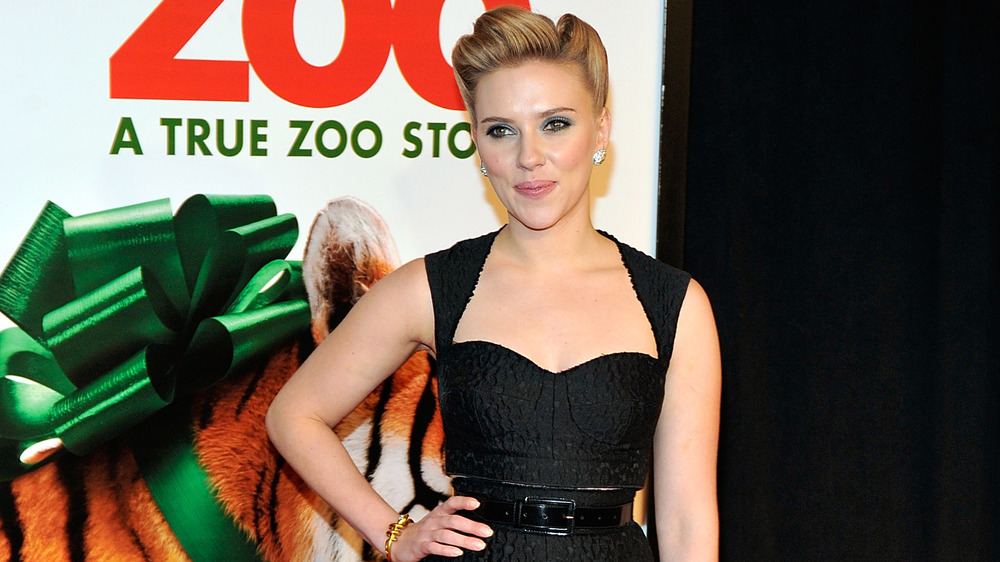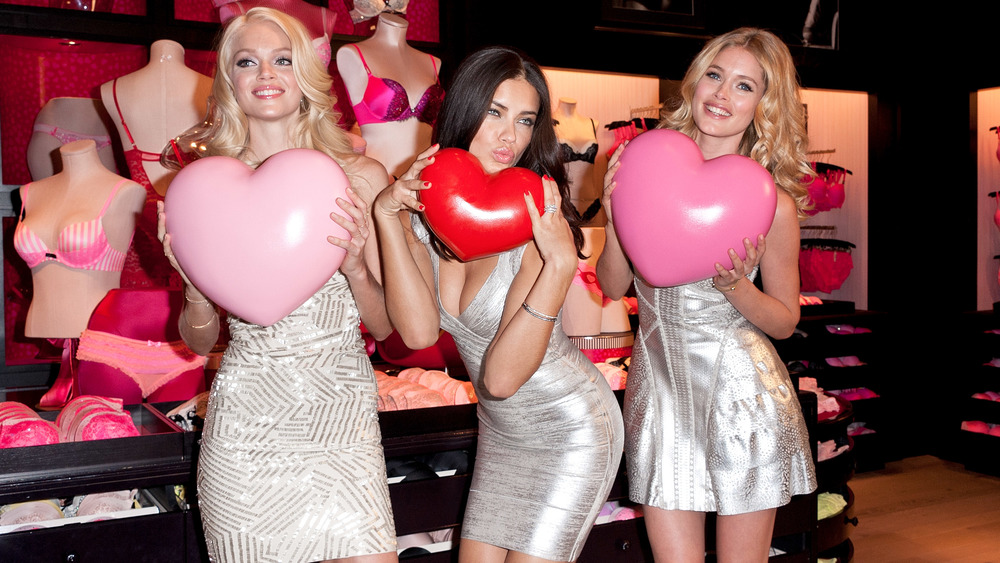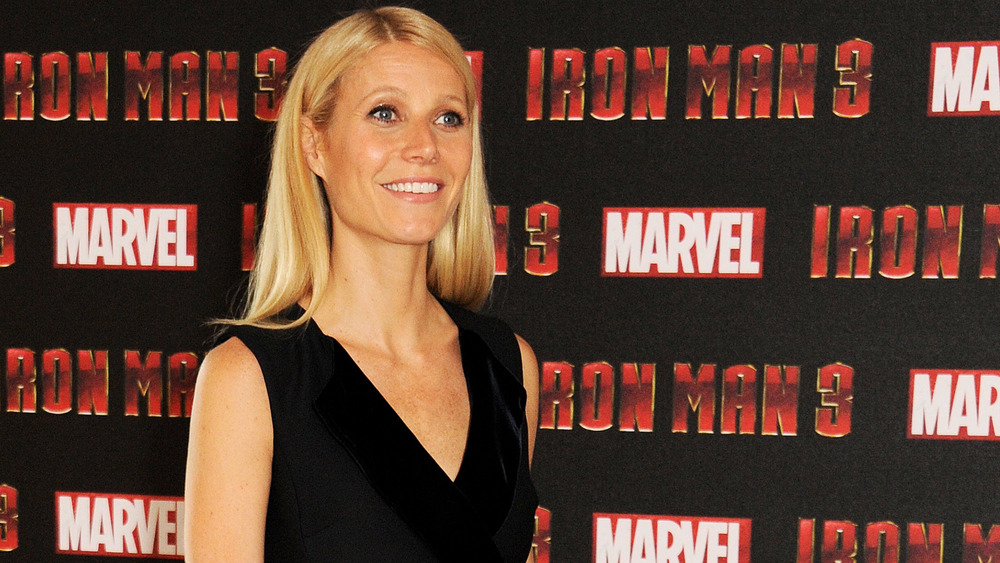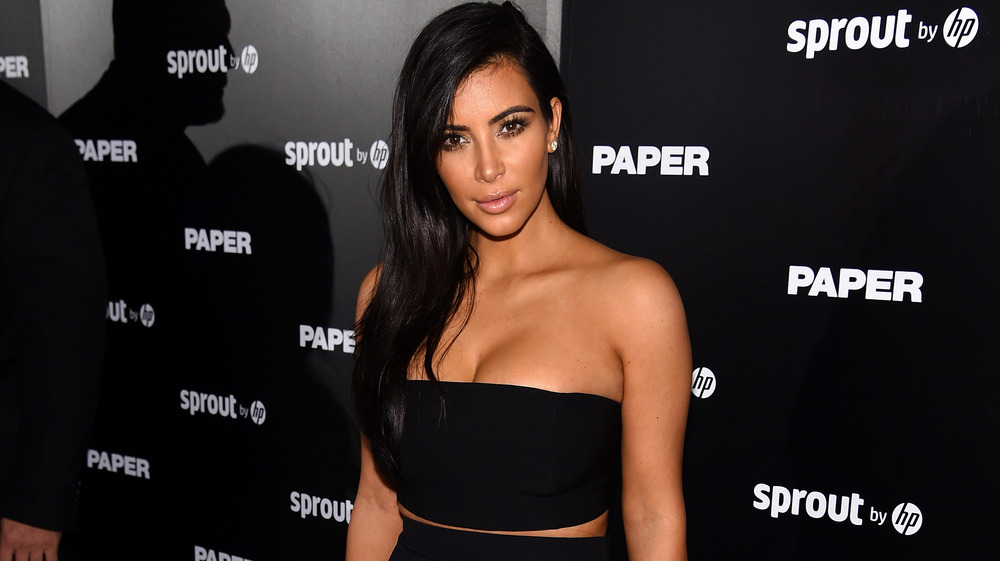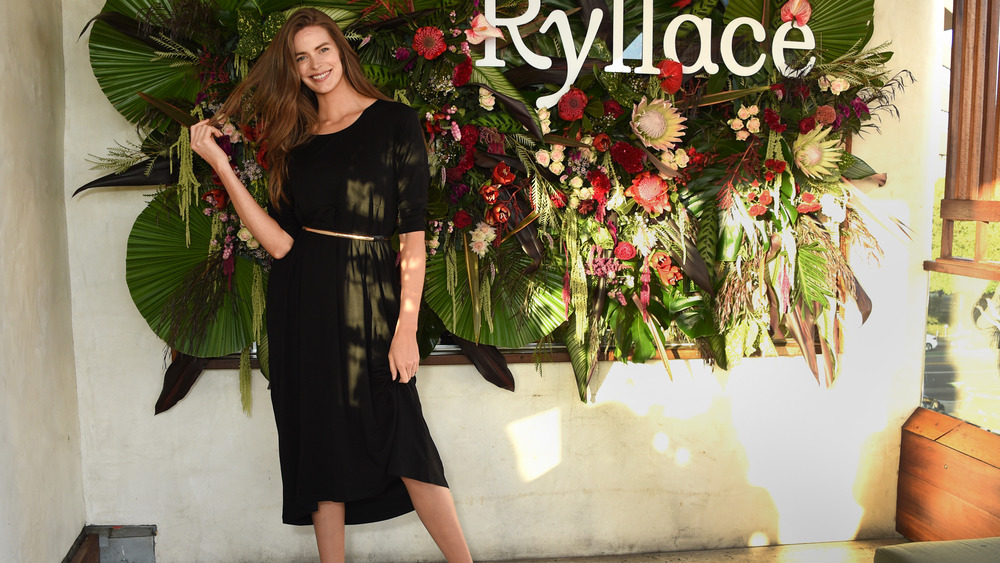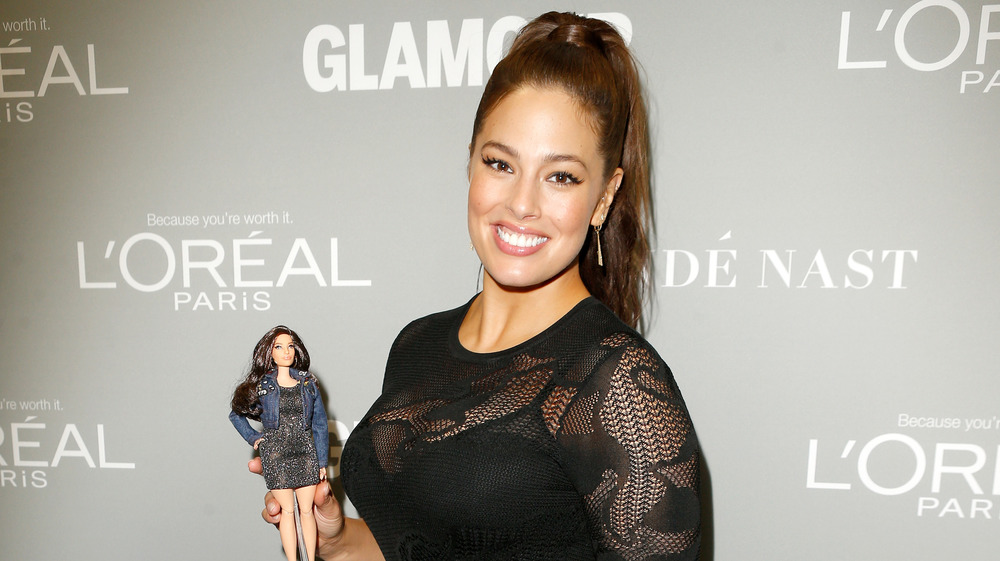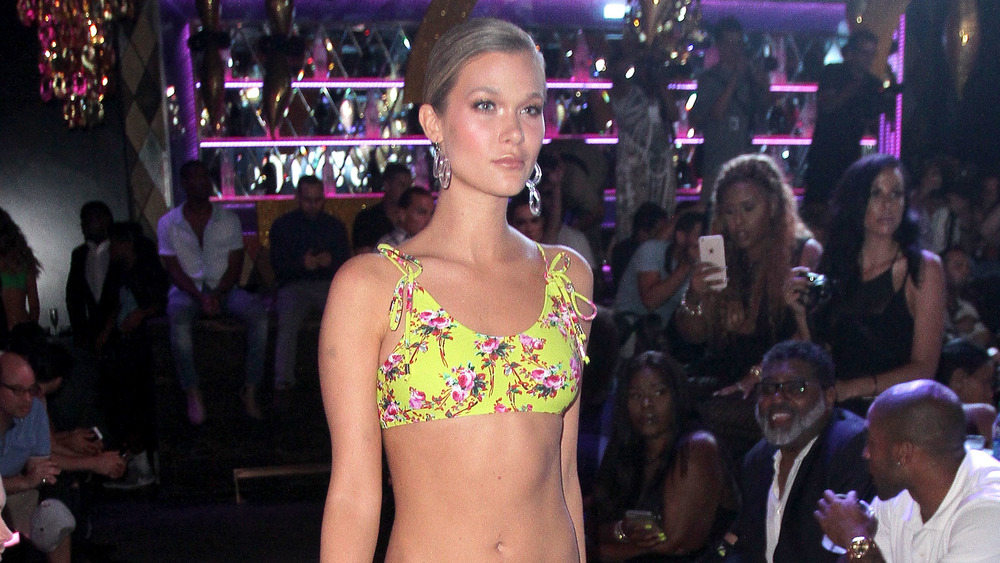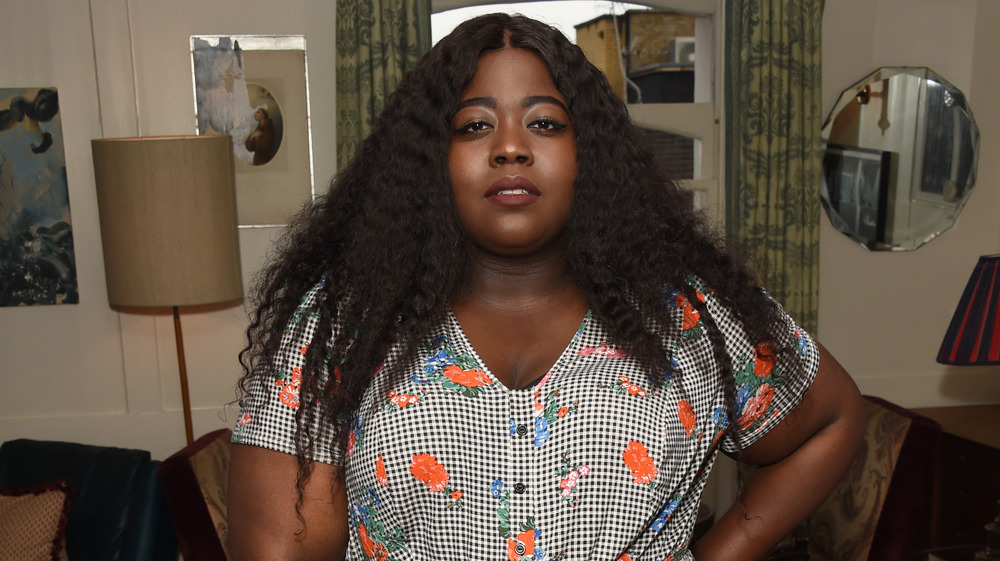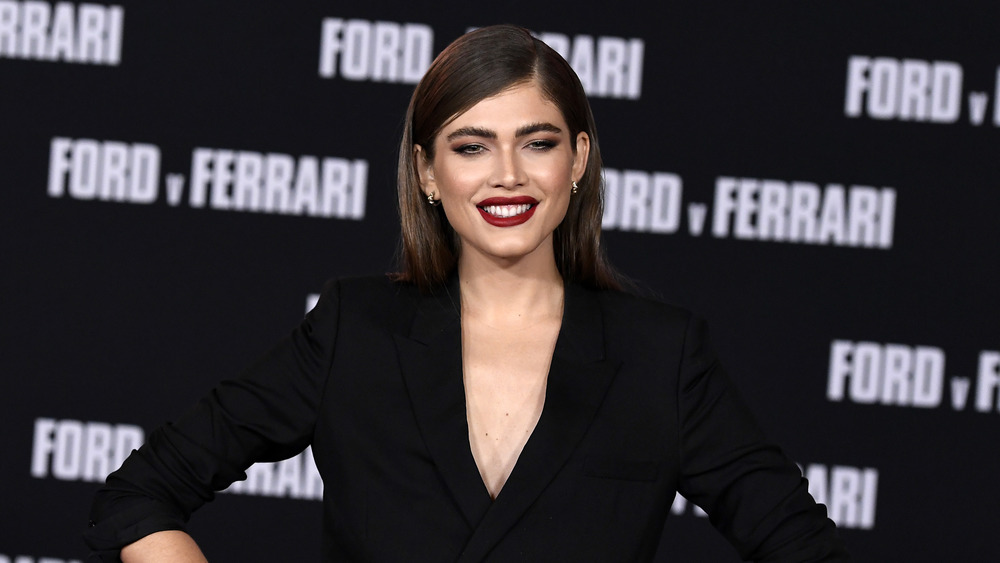The 'Perfect Female Body' Has Changed A Lot In The Last Decade
The female body is relentlessly scrutinized as society pushes unattainable and arguably unhealthy standards of beauty — a definition that, frankly, isn't most women. It's not unusual for female bodies to be considered too heavy or too thin, too curvy or too lanky, too tall or too short, too girly or too masculine, too busty or too flat-chested — too this or too that. You get the point.
The media plays a large role in dictating the definition of beauty (via Hamilton College). And this means that it's ever-changing. In the last decade alone, the "perfect" female body has looked a lot different year over year, and women have been expected to adapt. After all, ever heard of the saying "it pays to be pretty?" Frustratingly, not keeping up with the times can quite literally cost women.
Study after study after study suggests that attractive women are more socially accepted, considered more competent, given better opportunities, and paid higher salaries. Well, not when they look too good, according to another study published in the Journal of Social Psychology (via University of Colorado Denver). Because, you know, women walk a fine line between being "enough" and "too much." Wondering how the idealized woman's body has changed over the last 10 years? Here's a look. Just remember: All bodies are beautiful.
Tanned, glam bodies were everywhere in 2010
Surely you can recall the 2009 MTV series, Jersey Shore. You know, the show that made a whole lot of New Jerseyans cringe. The long-running show really started gaining steam in 2010, after viewers got to know and learned to love the G.T.L. boys and the ladies boasting hair extensions and acrylic nails galore — and their hard-to-keep-up-with, love-hate relationship with each other.
You remember Snooki, J-Woww, Sammi, Deena, and Angelina, don't you? Well, they weren't the only ones with super tanned skin, fake hair, fake nails, and fake lashes. As much as we all hate to admit it when we look back on pictures from the time — ugh, those penciled eyebrows and poufs — this MTV series was largely a reflection of reality back in 2010.
Listen, we're all for women choosing to do themselves up however they damn well please. If more makeup makes you feel more confident, you do you. But our pores are pretty glad that this hyper-bronzed and caked-up phase has ended. (And we think most dermatologists would agree.)
Proportionate idealized figures captivated women in 2011
What's not to love about Kelly Brook or Scarlett Johansson circa 2011 (or now)? There's no doubt that these women are beautiful and immensely talented — but would you give up your life to look like them?
A 2011 survey of women aged 18 to 65 found that one in three participants would be willing to die younger if they could have the "ideal" figure — one like that of the British model or the Black Widow (via Daily Mail). Believe it or not, 16 percent said they'd trade in a year of their lives to have this body type, while an additional 10 percent were willing to trade anywhere from two to five years of their lives. Additionally, 2 percent of women were even willing to give up 10 full years, and 1 percent were willing to shave 21 years off their lives if it meant they could look more like the popular women of the time.
Research published by Ohio State University in 2011 found that "college-age women [who viewed] magazines for five straight days that only included images of women with thin, idealized body types" actually experienced an improvement in body confidence (via ScienceDaily). Sadly, though, this was a double-edged sword; those same women were also more likely to report unhealthy dieting measures, like skipping meals.
In 2012, women were bombarded with images of thinness
During the year 2012, music videos primarily portrayed thin women, according to research published in the journal Sex Roles. The study purported that these "thin-ideal music videos" caused many women to self-objectify, but exercise improved some of the negative effects on their feelings of physical attractiveness. In other words: Watching thin singers and backup dancers made women question their own bodies but, so long as they'd exercised, they were more satisfied with their appearance.
In the western world, there was no such thing as too skinny, but that didn't necessarily translate to other countries. Although thin was "in" throughout the world, "skinny" was not — at least in urban India, a 2012 study of Indian women published in the Women's Studies International Forum explained. The message was essentially adapted: Get thin, but not too thin. The study found that the women adopted various diets in order to achieve thinner bodies, but they set limits in an effort to avoid getting too skinny. Many women throughout the world wanted to look like those in the mainstream media during this time.
In 2013, tall and thin women were celebrated
In 2013, society loved tall and toned women, like Gwyneth Paltrow. In fact, Paltrow was touted to be the "Most Beautiful Woman in the World" by People at the time. The actress told the magazine that she felt the most beautiful while she was at home with her family.
"Around the house, I'm in jeans and a T-shirt," she told People. While she added that she didn't tend to wear much makeup in 2013, she was working out with her friend and fitness instructor, Tracy Anderson. That exercise helped her feel younger and stronger, she said. It also undeniably helped her maintain her toned body.
Not everyone was pumped about Paltrow's new title. An op-ed published in the Los Angeles Times that year called the nomination a "bad message for girls." "Paltrow is very blond, very tall and very thin," the author wrote, acknowledging that she wasn't trying to blame or shame Paltrow. "She is a talented actress, looks fabulous in clothes and has terrific taste. It's her job to look good and at that she excels. But what is the message to girls? The Barbie ideal, with a slightly smaller cup size, lives on."
In 2014, everyone was big on bigger booties
The year 2014 was focused on bigger backsides. Think about it: In 2014, Nicki Minaj and J.Lo released "Anaconda" and "Booty," respectively. And who can forget when Kim Kardashian "broke the internet" with her Paper magazine cover? You know, the November issue in which she dons a beautiful black dress and pearls, bares all, and impressively balances a glass of champagne on her derriere.
Suddenly, thin wasn't all the rage. Women with curves were not only becoming more accepted; they were being celebrated in 2014. And, truthfully, it was pretty darn awesome. Well overdue, but awesome nonetheless.
"At the end of the day, it is very sexy and it is very empowering, I feel like, for women to embrace who they are," J.Lo told Extra TV in an interview about her song, "Booty." "Whether you're 20 or 40, it doesn't matter. You can be sexy and beautiful. And have fun."
By 2015, plus-size women were becoming more accepted by mainstream media
In 2015, "plus-size" models were finally making headway. Sports Illustrated featured its fullest-figured model on the cover of the swimsuit issue: Robyn Lawley. At the time, Lawley was a U.S. size 12 (via Time). However, the average American woman is a size 16 to 18, according to research published in the International Journal of Fashion Design, Technology, and Education. Even as of this writing, Byrdie explained that the fashion world considers any model above a size 12 to be "plus size" — though that's a rant for another time. And in 2015, Lawley wasn't even sure if that label resonated with her.
"I don't know if I consider myself as a plus-size model or not," she told Time in an interview about her swimsuit spread. "I just consider myself a model because I'm trying to help women in general accept their bodies." Lawley added that she never imagined she'd be featured on the cover of Sports Illustrated. When she started modeling a decade earlier, she'd catch heat at castings for her size. Her feature, however, marked the start of a new standard of beauty, and she said she wanted "to be there for the regular girls" like her.
Curvy bodies made headway in 2016
In 2016, Barbie changed the world for the better. The doll company came out with a curvy doll (and a petite and tall one), according to CNN. Tania Missad, the director of consumer insights for the doll line, said in a video that Mattel wanted to let girls know that "it doesn't matter what shape you come in, that anything is possible."
In the same year, Sports Illustrated proved that to be true. The magazine featured model Ashley Graham on the cover of its annual swimsuit edition. "My body has proven that so many different types of women and men want to see so much diversity in the pages of Sports Illustrated," Graham said in a video on the magazine's website. "Being confirmed for SI was a huge excitement. This is groundbreaking; I am the first-ever size-14 model to be in the pages of Sports Illustrated swimsuit edition. This, to me, is only telling for where the future of fashion and Sports Illustrated are headed."
Bigger wasn't necessarily better when it came to boobs in 2017
Big breasts weren't necessarily all the rage in 2017, at least among men. In a 2017 study published in Evolution and Human Behavior, researchers found that men preferred perky and firm breasts to just bigger ones.
"Individual preferences for breast size were variable, but the majority of raters preferred medium sized, followed by large sized breasts. In contrast, we found systematic directional preferences for firm breasts," the authors wrote in the report. Why is this? While breast size can be an indicator of fertility — to which men are subconsciously attracted — breast firmness can also be an indicator.
Maxim summed it up this way: "The researchers conclude that the sagginess that comes with increasing age and declining fertility, as well as estrogen-dictated breast size come together to synthesize the mathematical equation of the perfect pair of hooters, which is: relatively higher estrogen + relatively younger age = medium sized, firm, absolutely ideal boobs."
2018 introduced fat acceptance and body neutrality
In the early 2010s, the "body positivity" movement made waves globally. But, by 2018, activists started calling out the flaws and campaigning for something better. Enter: The "body neutrality" movement.
Plus-size fashion blogger Stephanie Yeboah told The Guardian that, in 2014, the body positivity movement led her to appreciate her body. But soon thereafter, body positivity became trendy and its inclusivity narrowed. "It has become a buzzword, it has alienated the very people who created it," Yeboah told the publication in 2018. "Now, in order to be body positive, you have to be acceptably fat — size 16 and under, or white or very pretty. It's not a movement that I feel represents me any more."
So instead, Yeboah and many others started embracing "fat acceptance" and "body neutrality." She said she's not "promoting obesity or telling people to be fat." Rather, she just wants women to know that "if you're fat, you don't have to hate yourself." She continued, saying, "Fat is still associated with ugly. It's very easy to say we shouldn't concentrate on our bodies but, for some of us, we have no choice because everyone else is."
In 2019, the mainstream media started expanding the definition of a beautiful woman
In 2019, standards of beauty were widening even more. For one, women's lingerie retailer Victoria's Secret announced its first transgender model, Valentina Sampaio (via Elle). Unfortunately, the move came just shortly after former CMO, Ed Razek, made a comment to Vogue dismissing the inclusion of trans women in Victoria's Secret fashion shows. So many people argued that it felt forced, to say the least. Emma Elizabeth Davidson of Dazed put it bluntly: "[It] feels like an attempt to get the cash registers ringing amid falling sales as opposed to a genuine move towards diversity."
Still, becoming a Victoria's Secret model was a big deal for Valentina Sampaio, who went on to build quite the career for herself. By the next year, she became the first transgender woman to be featured in the Sports Illustrated swimsuit issue (via Allure).
"I am excited and honored to be part of the iconic Sports Illustrated swimsuit issue," she penned in a personal essay for the magazine. "The team at SI has created yet another groundbreaking issue by bringing together a diverse set of multitalented, beautiful women in a creative and dignified way."
People started caring more about their health than the appearance of their bodies in 2020
The year 2020 wasn't exactly an easy one. However, it did spur some change. People started caring less about the appearance of their bodies and more about the health of their bodies.
According to research conducted by McKinsey & Company, many beauty products became considered "affordable luxuries" as no one really needed them while wearing masks, social distancing, and quarantining at home. The research also suggested that people started prioritizing their lives over their livelihoods.
As frequent sanitizing and mask-wearing became more mainstream, they've also certainly prompted people to pay more mind to their health. So self-care products that could help people address their mental and physical health became more important than things like lipstick, for example. In other words: 2020 might've been the year in which people began to embrace their natural selves and turned away from looking at idealized bodies. After all, there were bigger fish to fry in 2020.



